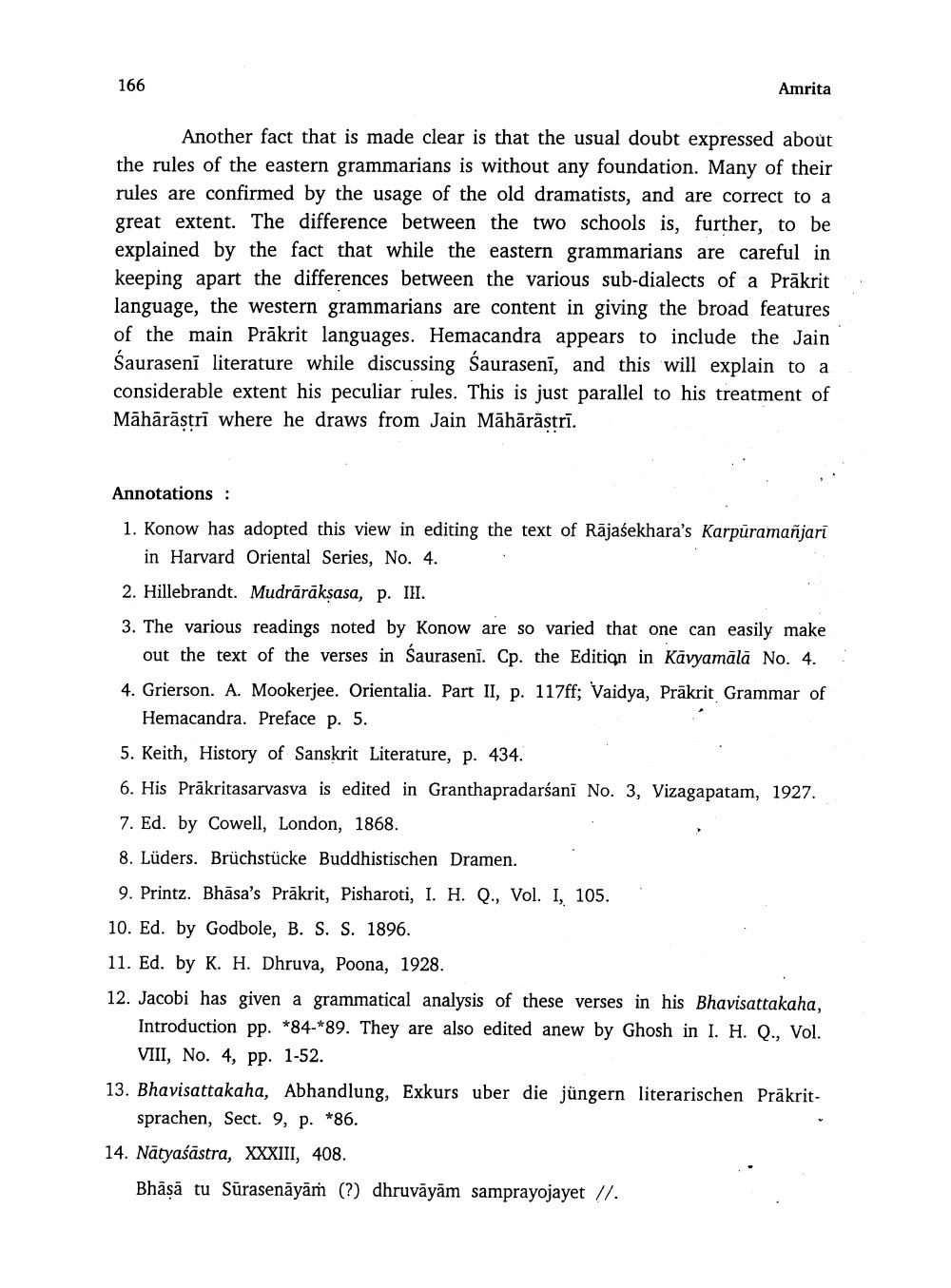________________
166
Amrita
Another fact that is made clear is that the usual doubt expressed about the rules of the eastern grammarians is without any foundation. Many of their rules are confirmed by the usage of the old dramatists, and are correct to a great extent. The difference between the two schools is, further, to be explained by the fact that while the eastern grammarians are careful in keeping apart the differences between the various sub-dialects of a Prākrit language, the western grammarians are content in giving the broad features of the main Prākrit languages. Hemacandra appears to include the Jain Sauraseni literature while discussing Saurasenī, and this will explain to a considerable extent his peculiar rules. This is just parallel to his treatment of Māhārāstrī where he draws from Jain Māhārāstrī.
Annotations : 1. Konow has adopted this view in editing the text of Rājasekhara's Karpūramañjarī
in Harvard Oriental Series, No. 4. 2. Hillebrandt. Mudrārāksasa, p. III. 3. The various readings noted by Konow are so varied that one can easily make
out the text of the verses in Saurasenī. Cp. the Edition in Kävyamālā No. 4.: 4. Grierson. A. Mookerjee. Orientalia. Part II, p. 117ff; Vaidya, Prākrit Grammar of
Hemacandra. Preface p. 5. 5. Keith, History of Sanskrit Literature, p. 434. 6. His Prākritasarvasva is edited in Granthapradarśanī No. 3, Vizagapatam, 1927. 7. Ed. by Cowell, London, 1868. 8. Lüders. Brüchstücke Buddhistischen Dramen.
9. Printz. Bhāsa's Prākrit, Pisharoti, I. H. Q., Vol. I, 105. . 10. Ed. by Godbole, B. S. S. 1896. 11. Ed. by K. H. Dhruva, Poona, 1928. 12. Jacobi has given a grammatical analysis of these verses in his Bhavisattakaha
Introduction pp. *84-*89. They are also edited anew by Ghosh in I. H. Q., Vol.
VIII, No. 4, pp. 1-52. 13. Bhavisattakaha, Abhandlung, Exkurs uber die jüngern literarischen Prākrit
sprachen, Sect. 9, p. *86. 14. Nātyaśāstra, XXXIII, 408.
Bhāṣā tu Sürasenäyäm (?) dhruvayām samprayojayet //.




